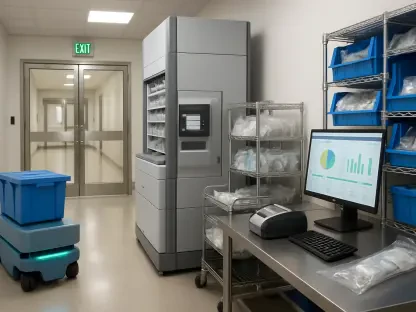In a concerning development for parents and educators in the Northwest Territories, recent testing has revealed elevated lead levels in the drinking water at N.J. Macpherson School, a facility that serves young students in the region, sparking immediate action from local authorities. This discovery has prompted efforts to safeguard the health of children and staff while also raising broader questions about water quality in aging school infrastructures across the territory. The Government of the Northwest Territories (GNWT) prioritized this school for testing due to its age and the vulnerability of its student population, uncovering results that exceeded Health Canada’s safety guidelines in several water fixtures. As news of these findings spreads, the focus has shifted to understanding the scope of the issue, the measures being taken to address it, and what this means for other schools in the area. This situation underscores the critical need for vigilance in maintaining safe environments for children, prompting a deeper look into both immediate responses and long-term solutions.
Health Risks and Immediate Actions
The detection of lead in specific water fixtures at N.J. Macpherson School has set off alarm bells due to the well-documented health risks associated with exposure, particularly for young children who are more susceptible to its harmful effects. Testing conducted on 22 sinks and fountains used for drinking or food preparation revealed that five fixtures exceeded Health Canada’s guideline of 5 micrograms per liter (µg/L), a threshold set to protect public health. These results were obtained through Tier 2 testing, which involves flushing taps for five minutes followed by a stagnation period before sampling. While drinking fountains and water bottle fill stations tested below the guideline, providing some relief, the presence of elevated lead in other fixtures necessitated swift intervention. The Chief Public Health Officer issued a Health Order mandating daily flushing of the school’s entire water system to reduce contamination risks. Additionally, alternative safe drinking water has been provided to ensure that students and staff are not exposed to potentially harmful levels while longer-term fixes are planned.
Beyond the immediate health concerns, the response to these findings highlights a commitment to transparency and proactive risk management in addressing environmental hazards in educational settings. The GNWT has emphasized that even low levels of lead can impact child development, often without noticeable symptoms, making prevention and early detection paramount. As part of the interim measures, the school continues to operate drinking fountains deemed safe based on test results, while affected fixtures are isolated or treated as contaminated until further notice. One test result remains pending, but precautions are already in place for that site. This cautious approach reflects an understanding of the gravity of lead exposure and the need to prioritize student safety above all else. The actions taken so far aim to mitigate immediate risks, but they also point to the urgency of developing permanent solutions to prevent future occurrences of such contamination in schools across the region.
Broader Water Quality Concerns in the Northwest Territories
While the situation at N.J. Macpherson School has drawn significant attention, it is essential to place these findings within the larger context of water quality across the Northwest Territories. Authorities have clarified that there are no concerns regarding lead in the municipal drinking water supply in Yellowknife or other communities, as regular testing confirms compliance with national safety standards. This reassurance helps to narrow the focus to specific infrastructure issues within older buildings like schools, rather than a widespread systemic problem. However, as a precautionary measure, the GNWT has initiated a comprehensive lead testing program for all schools in the territory. This initiative prioritizes facilities based on factors such as building age, existing water quality data, and the demographics of the student population, ensuring that the most vulnerable are protected first. Guided by national best practices, this systematic approach aims to identify and address potential risks before they become health crises.
Expanding on this proactive strategy, the GNWT’s efforts to test water quality across all schools demonstrate a forward-thinking stance on public health and infrastructure maintenance. The prioritization framework considers not only the physical condition of facilities but also the potential impact on students, reflecting a nuanced understanding of risk management. The Office of the Chief Public Health Officer plays a central role in overseeing these efforts, ensuring that testing protocols align with the latest scientific guidelines. While the municipal water supply remains safe, the focus on individual school systems highlights the challenges posed by aging plumbing and fixtures, which can introduce contaminants like lead over time. This broader testing initiative serves as a critical step toward safeguarding educational environments throughout the territory, offering a model for how regional governments can address localized environmental health concerns with a blend of urgency and thoroughness.
Public Health Support and Future Mitigation
In response to growing concerns among parents and staff about potential lead exposure, the Northwest Territories Health and Social Services Authority (NTHSSA) has established accessible support mechanisms to address health-related inquiries. For individuals associated with N.J. Macpherson School or other facilities under scrutiny, a streamlined process allows for scheduling blood tests and consultations through a Callback Request Form. This system is designed to minimize inconvenience by combining medical assessments and lab work into a single visit, ensuring that those worried about exposure can receive prompt attention. Recent blood testing at another local school, William McDonald, showed results within the normal range for 26 individuals, providing some reassurance that the issue may not have led to widespread health impacts yet. These efforts underscore a commitment to public health by making resources readily available to those who need them most during this unsettling period.
Looking ahead, the GNWT’s response to the lead contamination at N.J. Macpherson School involves a balance of immediate action and strategic planning for lasting solutions. Daily flushing of water systems and the provision of alternative drinking sources serve as temporary safeguards, while permanent mitigation measures are being developed to eliminate the risk of exposure entirely. A media briefing held on August 26 discussed testing outcomes and mitigation plans for multiple schools, including Range Lake North and William McDonald, reflecting a transparent approach to keeping the public informed. Coordination across departments such as Education, Culture and Employment, Health and Social Services, and Infrastructure further demonstrates a unified effort to tackle the issue from multiple angles. These steps lay the groundwork for safer school environments, offering a clear path forward through systematic testing, public health support, and infrastructure upgrades to prevent similar challenges in the future.









